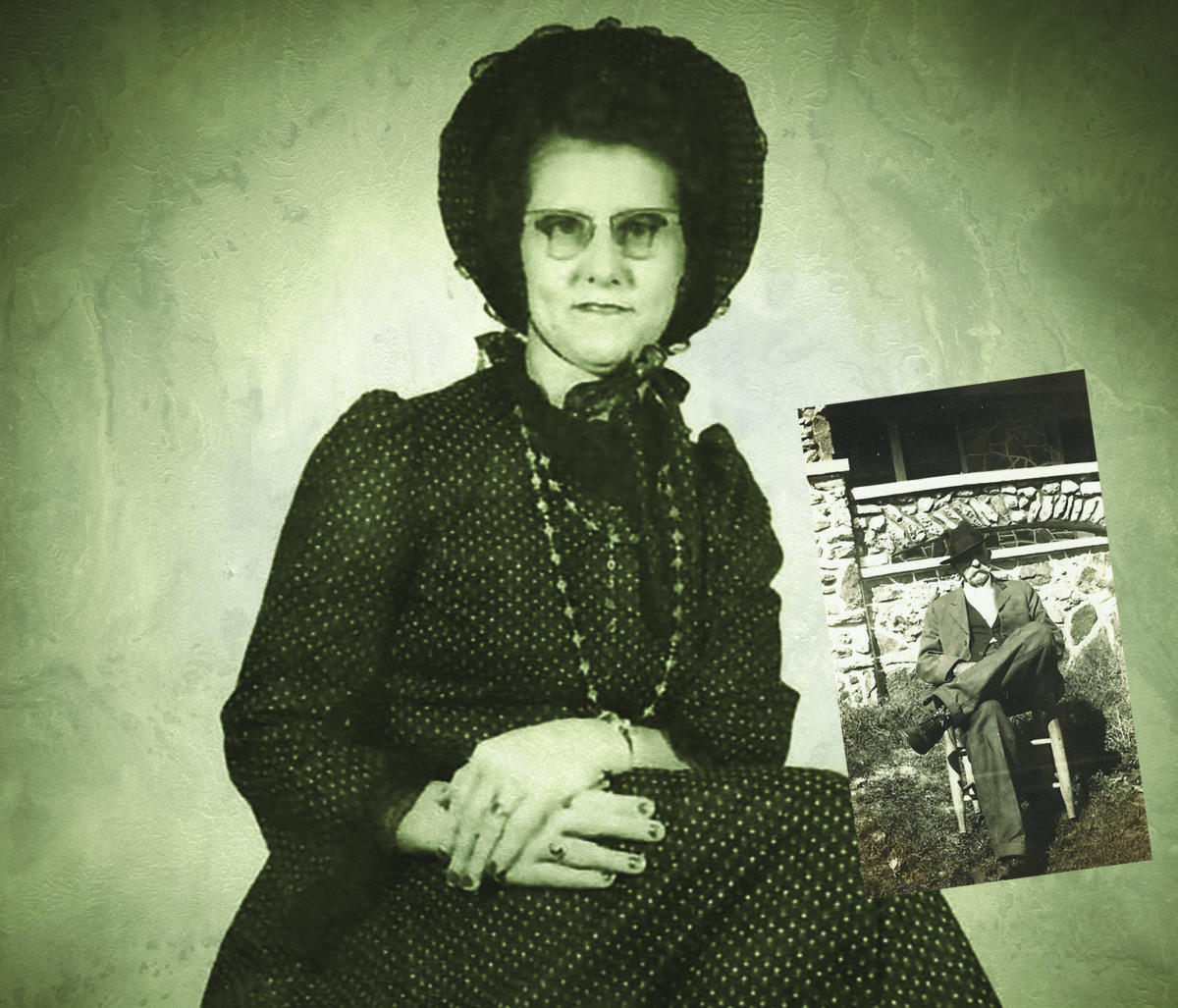A Missouri woman sacrificed much of her own life to help an aged Union veteran
Barely five feet tall and weighing no more than 100 pounds, Helen Viola Jackson sat on the edge of a bed in a private room of a nursing home, her tiny feet grazing the floor. Hanging on a wall, near a collection of birthday cards, was a photo of Jackson’s parents and one of her nine siblings—Helen, nearly 100, had outlived them all.
“My God, it’s hot as hell in here,” Pastor Nicholas Inman said as he entered the sparsely furnished room at Christmastime 2017. Jackson liked the heat on full blast and the curtains closed. The light hurt her eyes.
Still full of life despite physical challenges, the lifelong Missourian intended to plan her funeral with the pastor, whom she befriended after they first met in church three decades earlier in rural Marshfield. But on this afternoon, Jackson—almost a member of the Inman family now—also planned to reveal an 81-year-old secret.
“I was married,” she told the 35-year-old pastor. “What do you mean you were married?” replied the incredulous Inman, who thought Helen had been single her entire life. Jackson was no jokester, so this must be serious.
Jackson paused, then revealed even more stunning information. “Well, he was in the Union Army,” she said. The veteran was 93; she was 17.
Helen Jackson was “The Last Civil War Widow,” and, oh, what a story this old woman had to tell.
Born August 3, 1919, less than a year after the end of World War I, Helen Jackson grew up in Niangua (population about 275), a railroad and farming town about 25 miles northeast of Springfield. Hardworking and humble, she was the seventh of 10 children of Thursa and James Jackson, a farmer and longtime member of the Independent Order of Odd Fellows.
In the late 1920s, Route 66—the legendary “Mother Road”—pumped a little energy into sleepy Niangua, known mainly for its dairy and cattle farms. And, in March 1936, a tornado ravaged the area, killing four. But the pace of life was typically slow in this blink-and-you’ll-miss-it place.
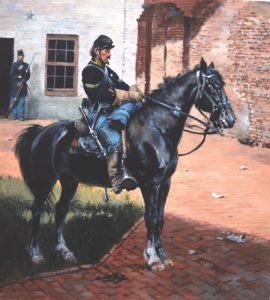
46th Missouri Infantry until March 1865. He then joined the 14th Missouri Cavalry until November 1865. His service rarely took him out of the state. (Don Troiani/ Bridgeman Images)
Twice-married Civil War veteran James Bolin, a widower, also lived in Niangua, alone, in a small house near a lumber yard and train tracks. In a photo from the 1930s, a seated Bolin—wearing a bowler hat, suit jacket, and dark vest—sported a large, white mustache. It’s a pity the photo isn’t in color, because the veteran had vivid blue eyes.
When he enlisted in 1864, Bolin—a 21-year-old farmer from Webster County—had dark hair and a fair complexion. The 5-foot-8 private served honorably with the 46th Missouri Infantry from fall 1864 to March 1865 and, later, with the 14th Missouri Cavalry. Although they were busy, neither unit saw much serious fighting.
In the spring of 1865, the cavalrymen—including Bolin—guarded the Wire Road in Missouri, a frequent target of guerrillas because of the telegraph line along the vital route. In late May 1865, more than a month after Robert E. Lee surrendered to Ulysses S. Grant, the unit was sent to confront unrepentant Confederates in the border state, which sent troops to both sides during the war.
“The band that crossed the railroad near Knobnoster on the 22d instant were all that I could obtain any reliable information of,” 14th Missouri Cavalry Lt. Col. Joseph Gravely wrote of the recalcitrant Rebels in an after-action report of those events. “At Warsaw and other points, I learned that the above-named band committed horrid outrages, murdering some ten or twelve discharged soldiers and citizens in Hickory and Benton Counties.”
Unable to find the guerrillas, the soldiers returned to camp—“men and horses in good condition,” according to Gravely.
Following a divorce from his first wife during the Civil War, Bolin married Elizabeth Ferrell in 1868, and the couple had seven children together. After Elizabeth’s death in 1922, James had no one to help with chores. So, in 1936, James Jackson recommended his daughter, Helen, then a 17-year-old high school student.
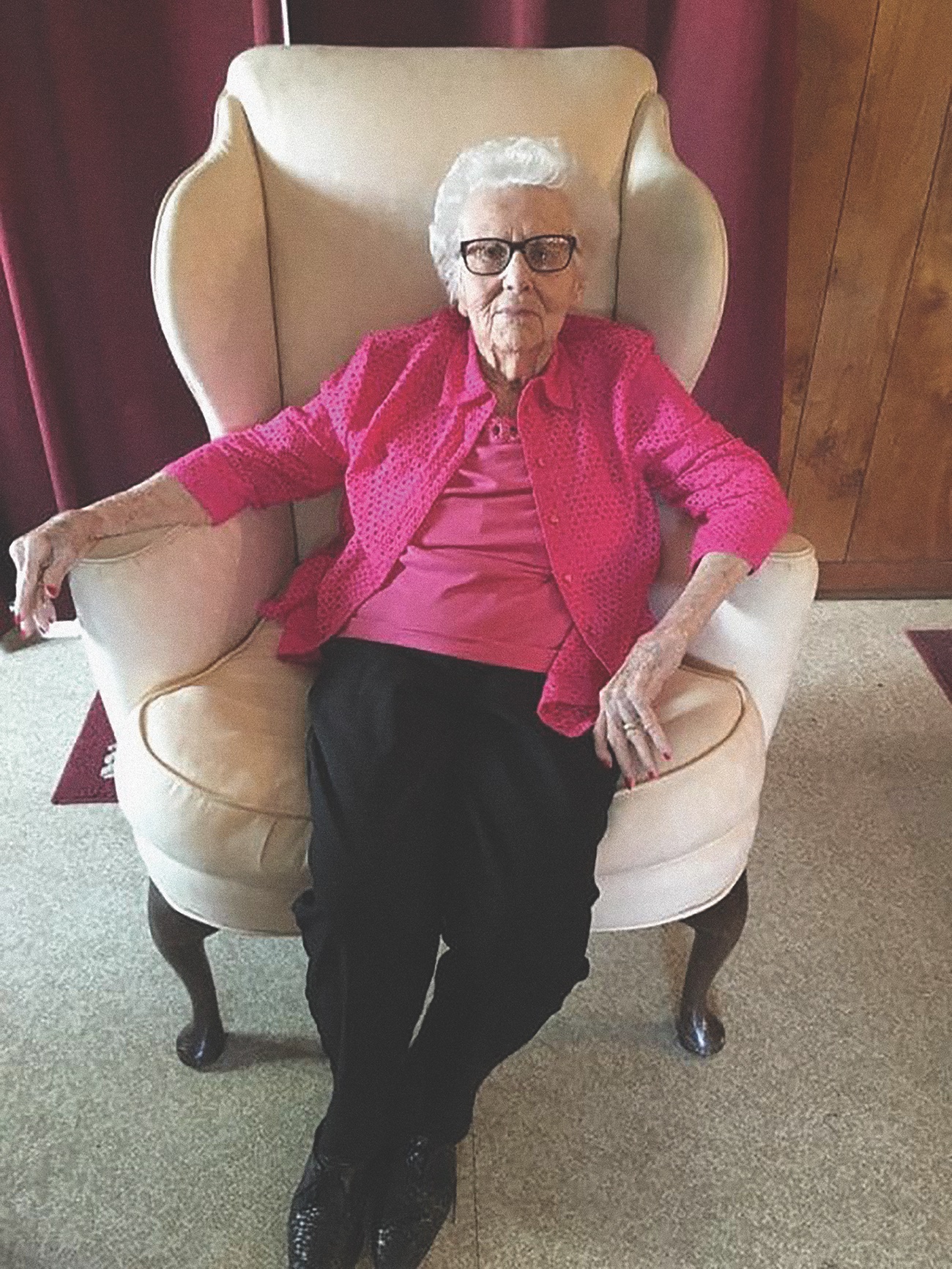
The kindly old man and the teen grew close—no, not in that way. Bolin enjoyed Helen’s company, and Jackson, an eager caregiver, became the veteran’s lifeline.
One day, Bolin made an unusual proposal to Jackson: I do not believe in accepting charity and don’t have money to pay you, so why don’t you marry me so I can give you my Civil War pension when I’m gone? For a girl of modest means, the veteran’s pension check—perhaps $30 a month or more in Depression-era America—was too enticing to decline.
Jackson accepted the old man’s offer, but with strict ground rules: She would keep her maiden name, go home to her family farm every day, and tell only a select few people. The couple’s 76-year-old age difference, after all, surely would have created a scandal.
Let’s do it, Bolin said.
On September 4, 1936, Jackson and Bolin were married in the living room of the veteran’s house. Shortly after the ceremony, Tommy Macdonnell, a teenager who was preparing for a squirrel hunt, and his father, Bolin’s physician, congratulated the couple. Keep this quiet, Dr. C.R. Macdonnell urged his son. To cement the union, Bolin gave his bride a pink topaz ring that belonged to his second wife, and the common-law marriage was recorded in his cherished personal Bible, given to him decades earlier by a traveling evangelist.
The union followed Jackson’s ground rules—cooking, housekeeping, chores, return to the farm. Although her husband talked about Civil War “blood and guts stuff” all the time, Jackson showed no interest.
Less than three years after the marriage, on June 18, 1939, Bolin died in the home of his daughter, Martha, after a lengthy illness. In the local newspaper, the 96-year-old veteran’s obituary listed next of kin: two other daughters besides Martha, two sons, 17 grandchildren, 36 great-grandchildren, and nine great-great-
grandchildren. There was no mention of his young widow.
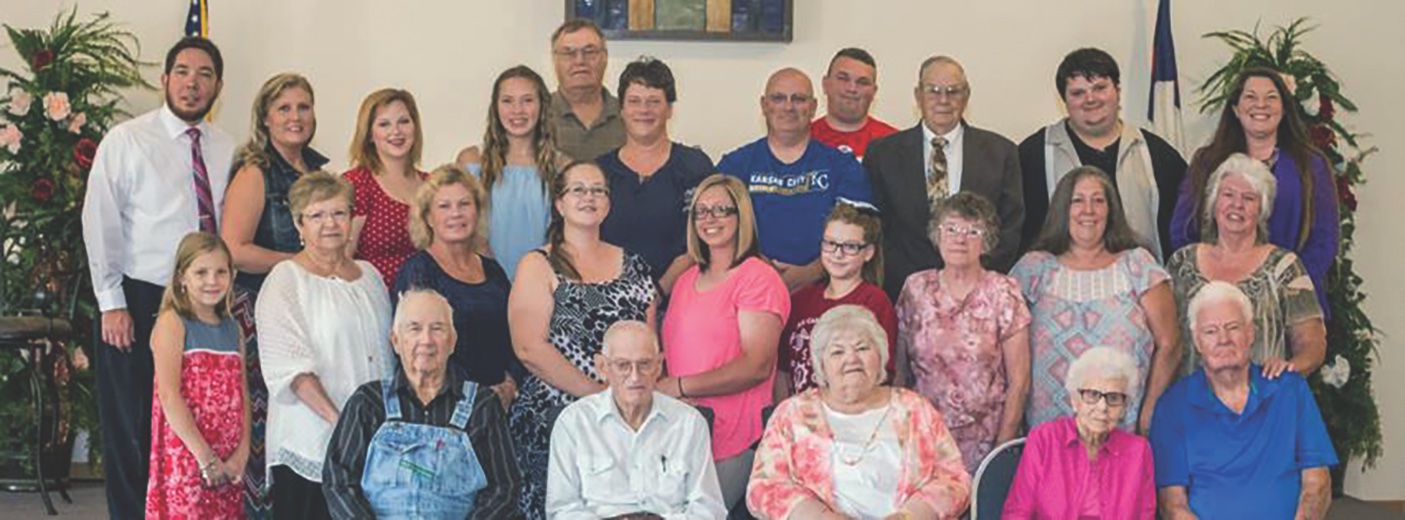
At the funeral service at the Free Will Baptist Church in Niangua, a quartet sang “Will the Waters Be Chilly,” followed by a soloist’s version of “Good Morning Up There.” Jackson didn’t hear a single verse—fearful her secret would be revealed, she did not attend the church and graveside services.
In the spartan nursing home room, Nicholas Inman gently pressed the nervous, old woman for more details about her stunning news. Shifting uncomfortably on the small bed, Helen Jackson eyed her pastor while trying to gauge his reaction.
Nearly blind, hard of hearing, and wracked by arthritis in her legs, Jackson spent most of her days in bed, staring at the ceiling. Perhaps that’s when she planned this big revelation, Inman thought.
Like bubbles in a glass of soda, details of Jackson’s long-ago life broke through the surface—slowly at first, then in a rush. Soon after her husband’s death, one of Bolin’s daughters threatened to ruin Jackson if she filed for the veteran’s pension. Petrified of having her reputation destroyed, she never did.
Around World War II, Jackson moved to Marshfield, roughly seven miles from Niangua, to escape potential “wagging tongues.” Worried that if she got serious with a man he would discover her secret, Jackson never dated, or married, again. Meanwhile, her sisters and brothers married and raised families. Later, Jackson cared for her aging parents—her mom died in 1953; her dad in 1972. (Her last sibling died in 2019.)
Throughout her adult life, Jackson carried heavy emotional baggage from her short marriage to James Bolin: What would anyone think of me if they found out I married a 90-something-year-old man when I was a teen?
In Marshfield, where she worked in a wood-working factory and, later, as a substitute cook in local schools, Jackson lived alone in a farmhouse along Route 66. She became an active member of the Elkland (Mo.) Independent Methodist Church, where Inman became pastor in 2004, and volunteered for the local Missouri Cherry Blossom Festival. She may have even teased her Civil War connection with a friend or two, but she largely lived alone with her secret for 81 years.
The potential historical implications of Jackson’s revelation fascinated Inman, a Civil War buff. Could his friend—this sometimes gruff, 98-year-old woman with the beautiful white hair—really be the last living Civil War widow? He sought more information about Private Bolin from Wilson’s Creek (Mo.) National Battlefield, which confirmed the basics of the soldier’s service.
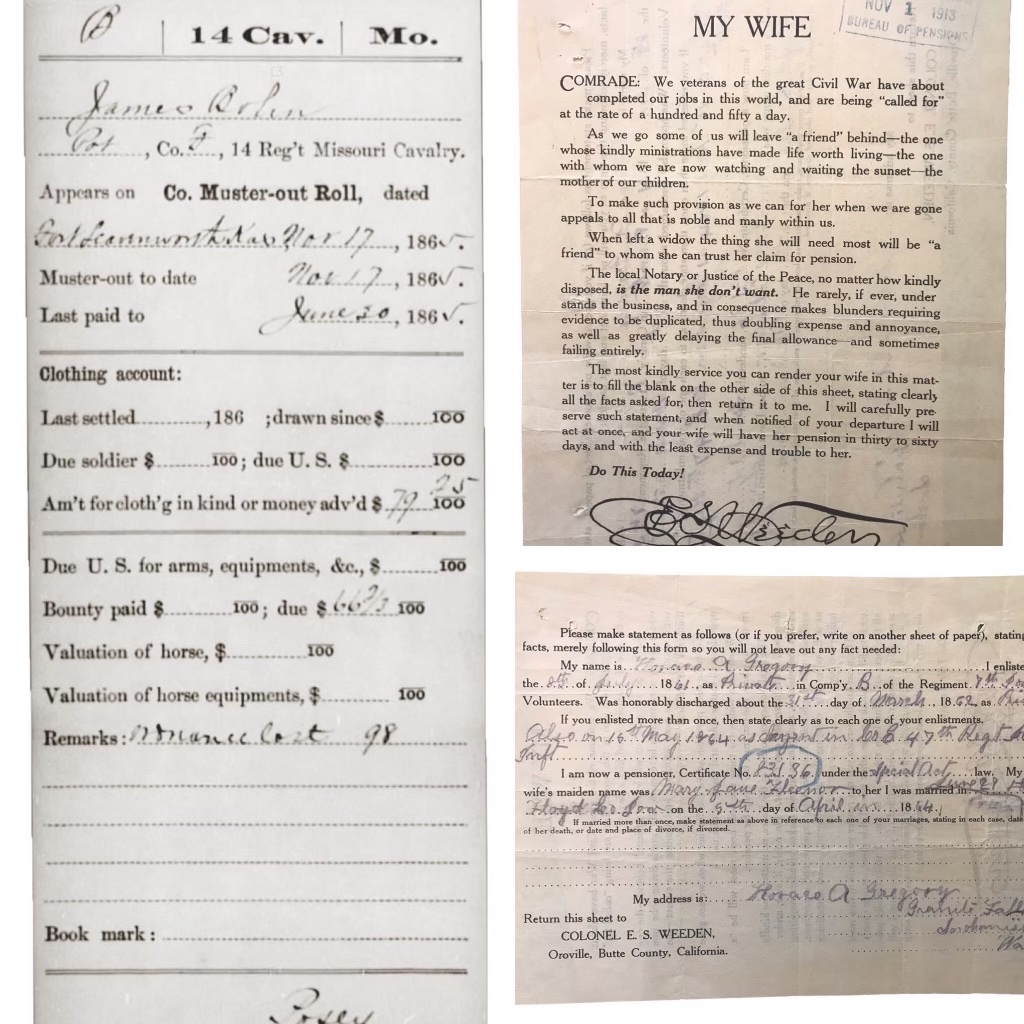
Stories of “last” Civil War widows percolate every so often in the news. The Sons of Union Veterans of the Civil War confirmed Jackson as the “last” publicly documented widow. But who knows if there are other Civil War widows out there harboring their own secrets?
In 2004, Alberta Martin, a sharecropper’s daughter who lived in poverty most of her life, died in Alabama at 97. Married to a Confederate veteran, William Jasper Martin, in the 1920s, “Miz Alberta” loved the attention she got from the Sons of Confederate Veterans, who would take her to conventions and rallies.
In 2008, Maudie White Hopkins, who enjoyed making fried peach pies and applesauce cakes, died at 93. When she was 19 in 1934, she married Confederate veteran William Cantrell, who was 67 years her senior. Hopkins said Cantrell supported her with his Arkansas state pension of “$25 every two or three months” and left her his home when he died in 1937.
Helen Jackson’s husband left her his Bible and eyeglasses, a bullet he kept during the war…and memories.
Reluctantly the old woman who treated her pastor like a grandson agreed to go public with her story. Jackson came to embrace her celebrity—especially in Marshfield.
At the town’s annual Fourth of July parade in 2018, she was grand marshal. Inman drove the Chevrolet she rode in. “Slow down,” she told him, “these people want to see me.”
A stone slab with a star and her name inscribed was placed on the Missouri Walk of Fame, near Marshfield’s town square. The school superintendent in Niangua gave Jackson—who never completed her education—an honorary high school degree for the Class of 1937.
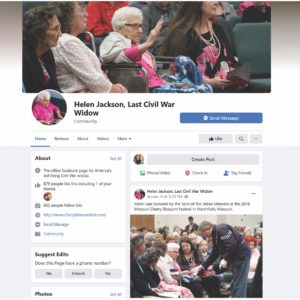
Through an address posted on a Facebook page that Inman set up (“Helen Jackson, Last Civil War Widow”), Jackson received fan mail from around the world. A member of the Sons of Union Veterans of the Civil War sent her a card each Christmas.
In 2019, Jackson sat down with a local historian for a lengthy oral history: “I didn’t want them all to think that I was a young woman who had married an old man to take advantage of him….Mr. Bolin really cared for me. He wanted me to have a future and he was so kind.”
And at the 2019 Cherry Blossom Festival, Inman’s play about Jackson’s life—“The Secret Veil”—was performed. Margaret Kerry, Disney’s model for Tinker Bell in 1953, played Jackson, who worried the portrayal would make her look like a “floozy.”
Jackson typically was blunt, like the president she adored, Missouri’s own Harry S. Truman. “She would not take guff off anyone,” said her friend, Ruthie Letterman.
“Not even words for the sass that woman had,” said Jill Phillips, the Cherry Blossom Festival’s official photographer.
“Could have whooped a bear,” said Inman.
But one day, her crusty exterior was pierced by another woman’s kindness. Phillips, who made jewelry in her spare time, gave Jackson a necklace. Encased in resin in the pendant was a tiny picture of her husband. Nearly blind, Jackson gently rubbed the keepsake image of Bolin—the only man who ever loved her, she once said—and wept.
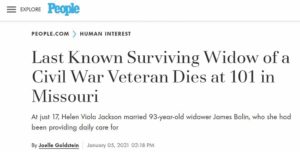 Shortly before Christmas, about 20 people gathered at Marshfield Cemetery for Helen Jackson’s graveside service. On December 16, 2020, the 101-year-old’s big heart finally gave out. Jackson’s life story made international news.
Shortly before Christmas, about 20 people gathered at Marshfield Cemetery for Helen Jackson’s graveside service. On December 16, 2020, the 101-year-old’s big heart finally gave out. Jackson’s life story made international news.
Perhaps Helen would have been pleased that Jimmy L. Bolin was there on that cold, blustery afternoon. At 6-foot-11 and 300 pounds, Civil War veteran James Bolin’s great-great-nephew looked nothing like his ancestor. The hulking man was honored to serve as a pallbearer for “The Last Civil War Widow,” who outlived a host of other potential pallbearers.
“At funerals, people don’t like to take pictures,” said Bolin, a lifelong Missourian. “How we wish we did at this one. This was part of history.…”
John Banks is the author of two Civil War books and his popular Civil War blog (john-banks.blogspot.com). He lives in Nashville, Tenn. Kristen Pawlak of the Missouri Civil War Museum in St. Louis and Penny Bolin of Springfield, Mo., aided with Banks’ research for this story.

